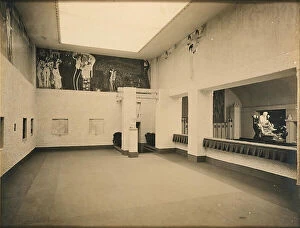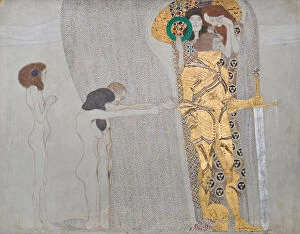Beethoven Frieze Collection
The Beethoven Frieze, a masterpiece of the Vienna Secession movement created by Gustav Klimt in 1902
All Professionally Made to Order for Quick Shipping
The Beethoven Frieze, a masterpiece of the Vienna Secession movement created by Gustav Klimt in 1902, showcases a grand procession of figures representing various aspects of human life and emotion. In this iconic work, Klimt, seated in an armchair, is depicted alongside other members of the Vienna Secession. The Longing for Happiness, a section of the fresco, highlights a man and woman in an intimate embrace, while studies for the Beethoven Frieze, such as Man and Woman and Study of a Woman's Head in Three-Quarter Profile, offer glimpses into the artist's creative process. The Arts, Chorus of Paradise, Embrace, and Knight in Shining Armor are just a few of the intricately detailed scenes found in this magnificent work, where Klimt explores themes of love, desire, and the human condition. The Beethoven Frieze remains a testament to Klimt's artistic genius and the spirit of the Vienna Secession.








